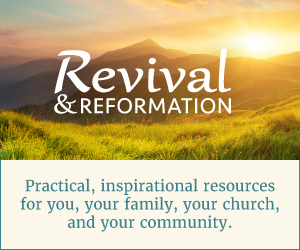The accompanying outline contains what I feel to be the true spiritual and prophetic contents of Christ's Post-Ascension Gospel. In it the Lord Jesus Himself unfolded His eternal glory and the triumph of His redeemed church in the great drama of the universe.
It seems to have been a Sabbath day's message given to the beloved disciple, John, during his imprisonment on the isle of Patmos for his Christian faith and testimony, probably in the reign of Domitian, about A.D. 95. (Rev. 9:10.) This prophecy, which ranks as the noblest in all the Bible, covers the entire Christian dispensation, unveiling the most glorious manifestations of the Godhead—the Father, the Son, and the Holy Spirit—ever vouchsafed to a human soul; placing the all-availing atonement of the Lamb of God at the very center of interest in the celestial sphere; and climaxing the whole vision of human redemption in the glorious reign of "the King of ,kings and Lord of lords," together with the eternal bliss of the redeemed in the New Jerusalem and the earth made new.
The outline is sufficiently indicative of the line of thought which I feel runs through this wonderful disclosure. Let it be noted that the beloved John himself analyzes its contents in three parts : First, "the word of God," or the risen Saviour Himself unveiled in His high priestly glory. (Rev. :9-18.) Second, "the testimony of Jesus Christ," or His witness as such which He gave, and still gives, through His Spirit, to the sevenfold church of the Christian age. (Rev, 1:17 to 3;22.) And third, "All things that he saw," or the steps leading up to the ultimate victory of the Son of God and His saints in the great conflict of good and evil. This third section comprises the other great lines of prophecy (besides "the seven churches") which cover our dispensation, and introduce us to the final triumph. (Rev. 4 :1 to 22:5.)
Furthermore, John, having been taken "in the spirit" into the first apartment, or holy place, of the heavenly sanctuary (Rev. 4:2), was shown, first, the opening of the ministry there, on the day of Pentecost (A.D. 31). Christ was shown as our High Priest, and also the Lamb as it had been slain, but now having seven horns and seven eyes. (Rev. 5:6.) With Him is the multitude of His assistant priests (Rev. 5:8-1o) who had risen from the dead ifnmediately after His resurrection (Matt. 27:50-52), had ascended with Him to heaven (Eph. 4:8, margin) ; and now share with Him the priestly ministry in the heavenly temple. This ceremony
was most probably inaugurated on the day of Pentecost (A.D. 31), for it was then that the Holy Ghost was poured out upon the heads of the hundred and twenty disciples gathered in the upper room, awaiting the promised gift of the Spirit, (Luke 24:46-49; Acts I :4-8, 15.)
Then, from this point of view—the holy place of the heavenly sanctuary—John was shown the long lines of prophecy of the seven seals with their concomitants, the 144,000, the great Second Advent Movement of 1840-44, the two witnesses, and the French Revolution. (Rev. 6:1 to 11 :14.)
The rest of the Revelation appears to have been viewed on that Lord's day in Patmos from the most holy apartment of the heavenly temple. (Rev. II :19.) The contents comprise a prophetic history of the great controversy between Christ and Satan, from its inception in heaven to its conclusion on earth, with special emphasis placed upon the final act in the great drama of deception. Then follow the new creation, with paradise restored and the Garden of Eden enlarged and beautified into the New Jerusalem, the grand and glorious metropolis of the earth made new. (Rev. 12:1 YO 22:5.)
The stately progress of the great lines of thought unfolded may be followed quite easily by a careful study of the accompanying outline without further explanations.
May you and I share in the promised blessings (Rev. I:3; 22:7) in our predestined parts in the book of life, in the Holy City, and in the glorious things which are written in this book! (Rev. 22:19.)















